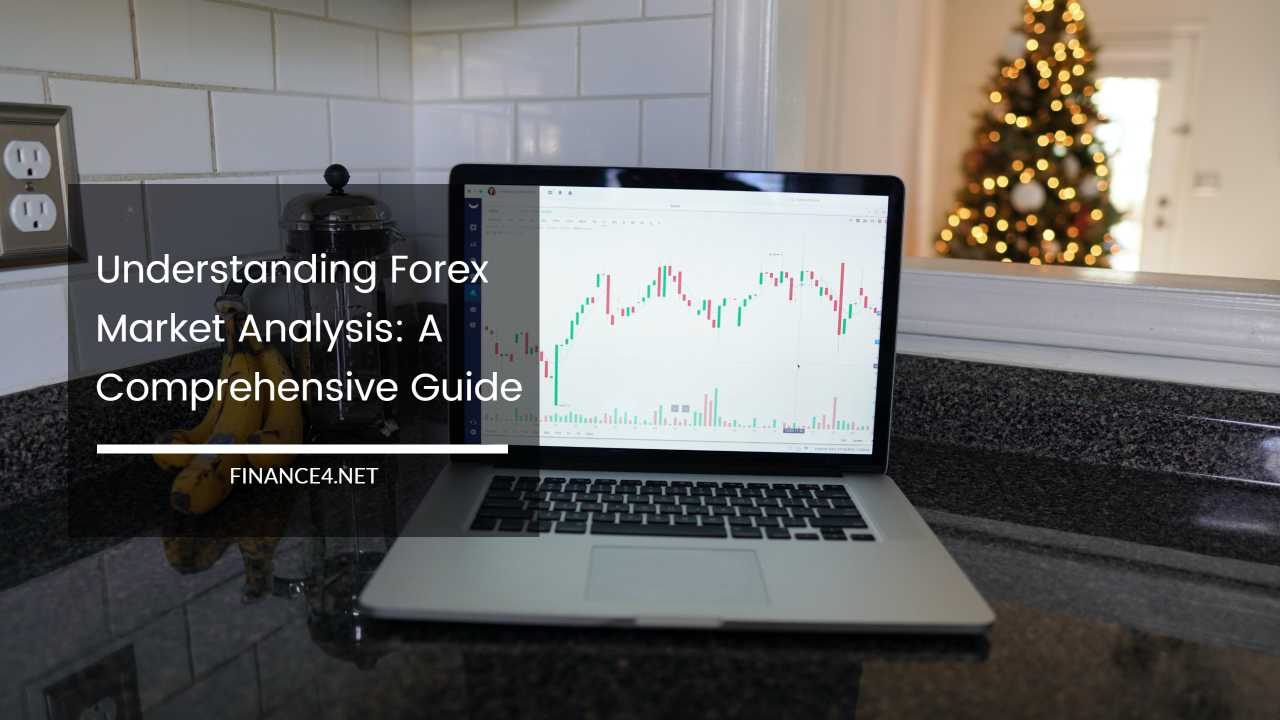Understanding Forex Market Analysis: A Comprehensive Guide

Forex Market Analysis
The foreign exchange market, commonly known as forex or FX, is the largest and most liquid financial market in the world. It involves the trading of currencies from different countries and serves as a platform for various participants, including banks, financial institutions, corporations, governments, and individual traders.
To succeed in the forex market, traders need to have a thorough understanding of market analysis.
In this comprehensive guide, we will delve into the various aspects of forex market analysis, exploring fundamental analysis, technical analysis, and the importance of sentiment analysis to help traders make informed decisions and navigate the dynamic world of forex trading.
1. What is Forex Market Analysis?
Forex market analysis refers to the process of examining and evaluating various factors that influence currency prices to predict future price movements.
Traders use market analysis to make informed trading decisions, determine entry and exit points, and manage risks effectively.
There are three primary types of forex market analysis:
a) Fundamental Analysis:
Fundamental analysis involves evaluating economic, political, and social factors that influence a country’s currency value. Traders analyze economic indicators, such as GDP growth, employment data, inflation rates, and interest rates, to assess a country’s economic health.
Additionally, geopolitical events and government policies can also impact currency prices. By understanding these fundamental factors, traders can anticipate currency movements and make strategic trading decisions.
b) Technical Analysis:
Technical analysis involves studying past market data, primarily price and volume, to identify patterns and trends that may help predict future price movements.
Technical analysts use various tools, such as charts, indicators, and oscillators, to analyze historical price data. They look for chart patterns, support and resistance levels, and other technical signals to determine potential entry and exit points.
Technical analysis is particularly popular among short-term traders who rely on historical price movements for their trading decisions.
c) Sentiment Analysis:
Sentiment analysis focuses on gauging the overall market sentiment and trader psychology. Traders use sentiment analysis to understand whether market participants are optimistic or pessimistic about specific currencies. Market sentiment can influence price movements, as traders may react emotionally to news and events.
Sentiment analysis helps traders identify potential shifts in market sentiment and anticipate possible trend reversals.
2. Fundamental Analysis in Forex Trading
Fundamental analysis in forex trading involves evaluating various economic indicators and factors that can impact currency prices.
Traders look at economic data releases, government policies, and global events to assess the strength of a country’s economy and its currency. Here are some essential elements of fundamental analysis:
a) Economic Indicators:
Economic indicators provide valuable insights into a country’s economic health. Some key indicators include Gross Domestic Product (GDP), unemployment rate, inflation rate, consumer price index (CPI), and purchasing managers’ index (PMI). Positive economic data can strengthen a country’s currency, while negative data may weaken it.
b) Interest Rates:
Central banks set interest rates, and changes in these rates can significantly impact currency prices. Higher interest rates in a country can attract foreign investment, increasing demand for the currency and driving its value higher.
Conversely, lower interest rates may lead to currency depreciation as investors seek higher returns elsewhere.
c) Political Stability:
Political stability and the overall geopolitical climate can influence currency values. Countries with stable governments and favorable economic policies are likely to have stronger currencies, as they inspire confidence among investors.
d) Economic Policies:
Governments’ fiscal and monetary policies can impact currency values. Traders closely monitor government policies, such as taxation, spending, and trade regulations, to gauge their effect on the economy and the currency.
e) Trade and Capital Flows:
International trade and capital flows can influence currency prices. Trade surpluses, where a country exports more than it imports, can boost the currency. On the other hand, trade deficits may lead to currency depreciation.
f) Global Events:
Significant global events, such as geopolitical tensions or natural disasters, can cause market volatility and affect currency prices. Traders must stay informed about global developments that may impact forex markets.
Fundamental analysis provides a comprehensive understanding of a currency’s value and helps traders make long-term trading decisions based on economic trends and fundamental factors.
3. Technical Analysis in Forex Trading
Technical analysis involves studying historical price data and chart patterns to forecast future price movements.
Traders use various tools and indicators to identify trends, reversals, and potential entry and exit points. Here are key components of technical analysis:
a) Candlestick Charts:
Candlestick charts are a popular way to visualize price movements. Each candlestick represents a specific time frame (e.g., 1 minute, 1 hour, 1 day) and displays the opening, closing, high, and low prices for that period.
Candlestick patterns can provide valuable insights into market sentiment and potential price reversals.
b) Support and Resistance Levels:
Support and resistance levels are price levels where the currency has historically struggled to move below (support) or above (resistance).
These levels can act as barriers and influence price movements. Traders use support and resistance levels to identify potential entry and exit points.
c) Trendlines:
Trendlines are drawn on a chart to connect consecutive highs or lows. Upward-sloping trendlines indicate an uptrend, while downward-sloping trendlines indicate a downtrend.
Trendlines help traders identify the direction of the market and potential trend reversals.
d) Moving Averages:
Moving averages smooth out price data and help traders identify trends by calculating the average price over a specific period.
Popular moving averages include the simple moving average (SMA) and the exponential moving average (EMA). Crossovers of different moving averages can signal potential trend changes.
e) Relative Strength Index (RSI):
The RSI is a momentum oscillator that measures the speed and change of price movements. It ranges from 0 to 100, with values above 70 indicating overbought conditions and values below 30 indicating oversold conditions.
f) Moving Average Convergence Divergence (MACD):
The MACD is a trend-following indicator that shows the relationship between two moving averages of a currency pair’s price.
It consists of two lines—the MACD line and the signal line—and a histogram. Traders look for crossovers and divergences between these lines for potential trading signals.
g) Fibonacci Retracements:
Fibonacci retracements are levels used to identify potential support and resistance areas based on the Fibonacci sequence. Traders use these retracement levels to find potential areas where the price may reverse or continue its trend.
Technical analysis is valuable for short-term traders who aim to capitalize on price movements and profit from short-term market fluctuations.
4. Sentiment Analysis in Forex Trading
Sentiment analysis focuses on understanding market participants’ emotions and behavior to predict potential price movements.
It involves assessing trader sentiment, market positioning, and overall market psychology. Here are some key aspects of sentiment analysis:
a) Market Sentiment Indicators:
Market sentiment indicators provide insights into traders’ overall views on a currency pair. These indicators include the Commitment of Traders (COT) report, which shows the positions of institutional traders, and the Speculative Sentiment Index (SSI), which reveals retail traders’ positioning.
b) News and Events:
News and events can significantly impact market sentiment. Positive news may boost investor confidence and lead to currency appreciation, while negative news can create uncertainty and cause currency depreciation.
c) Fear and Greed:
Fear and greed are common emotions that drive market participants. Fear can lead to risk aversion and safe-haven buying, while greed can fuel risk-taking and speculative trading.
d) Consensus Reports:
Consensus reports compile the opinions of multiple analysts and experts on a currency’s future direction. Traders use these reports to gauge the overall market sentiment.
e) Social Media and Sentiment Analysis Tools:
Traders also analyze social media platforms and sentiment analysis tools to gauge public opinions and sentiment on a currency. These tools use natural language processing to assess sentiment in online conversations.
Sentiment analysis complements fundamental and technical analysis by providing insights into traders’ behavior and potential market shifts driven by emotions and collective sentiment.
5. Combining Market Analysis Techniques
Successful forex traders often use a combination of fundamental, technical, and sentiment analysis to make well-rounded trading decisions.
Each analysis type provides unique insights into the market, and combining them can increase the accuracy of predictions. Here are some strategies for combining market analysis techniques:
a) Using Technical Analysis for Entry and Exit Points:
Technical analysis can help identify optimal entry and exit points for trades based on historical price movements.
Traders can use support and resistance levels, trendlines, and technical indicators to determine where to enter a trade and when to take profits or cut losses.
b) Considering Fundamentals for Long-Term Trading Decisions:
Fundamental analysis provides a broader understanding of a currency’s underlying value and economic health.
Traders can use fundamental analysis to make long-term trading decisions based on macroeconomic trends and global events.
c) Monitoring Sentiment for Contrarian Opportunities:
Sentiment analysis can be particularly useful for contrarian trading strategies. When sentiment reaches extreme levels (e.g., high bullish sentiment), it may indicate a potential market reversal. Contrarian traders take the opposite position to the prevailing sentiment.
d) Integrating Multiple Time Frames:
Traders often analyze multiple time frames to get a comprehensive view of the market.
For example, they might use the daily chart for long-term trends, the hourly chart for short-term trends, and the 15-minute chart for precise entry and exit points.
6. Risk Management in Forex Trading
Regardless of the analysis techniques used, risk management is crucial in forex trading. Risk management involves implementing strategies to protect capital and minimize losses. Here are some essential risk management principles:
a) Position Sizing:
Determine the appropriate position size based on your trading capital and risk tolerance. Avoid risking a significant portion of your capital on a single trade.
b) Stop Losses:
Always use stop-loss orders to limit potential losses. Stop-loss orders automatically close a trade when the price reaches a predetermined level, protecting you from further losses.
c) Take Profits:
Set take-profit orders to secure profits when the price reaches your target level. Taking profits at predefined levels helps you lock in gains and avoid giving back profits during market fluctuations.
d) Diversification:
Diversify your trading portfolio by trading multiple currency pairs or assets. Diversification helps spread risk and reduces the impact of a single losing trade.
e) Risk-Reward Ratio:
Aim for a favorable risk-reward ratio, where the potential reward outweighs the risk. A common approach is to target a risk-reward ratio of 1:2 or higher.
7. Staying Informed and Adapting to Market Conditions
Forex markets are influenced by a multitude of factors, and conditions can change rapidly. Traders need to stay informed about economic releases, geopolitical events, and market sentiment to adapt their strategies accordingly.
Continuously improving market analysis skills and keeping abreast of industry news and trends are essential for long-term success in forex trading.
Final Remarks
Forex market analysis is a fundamental aspect of successful trading. By understanding the nuances of fundamental, technical, and sentiment analysis, traders can make informed decisions and gain a deeper understanding of currency price movements.
Combining multiple analysis techniques and employing effective risk management strategies can enhance trading performance and help traders navigate the dynamic and exciting world of forex trading.



